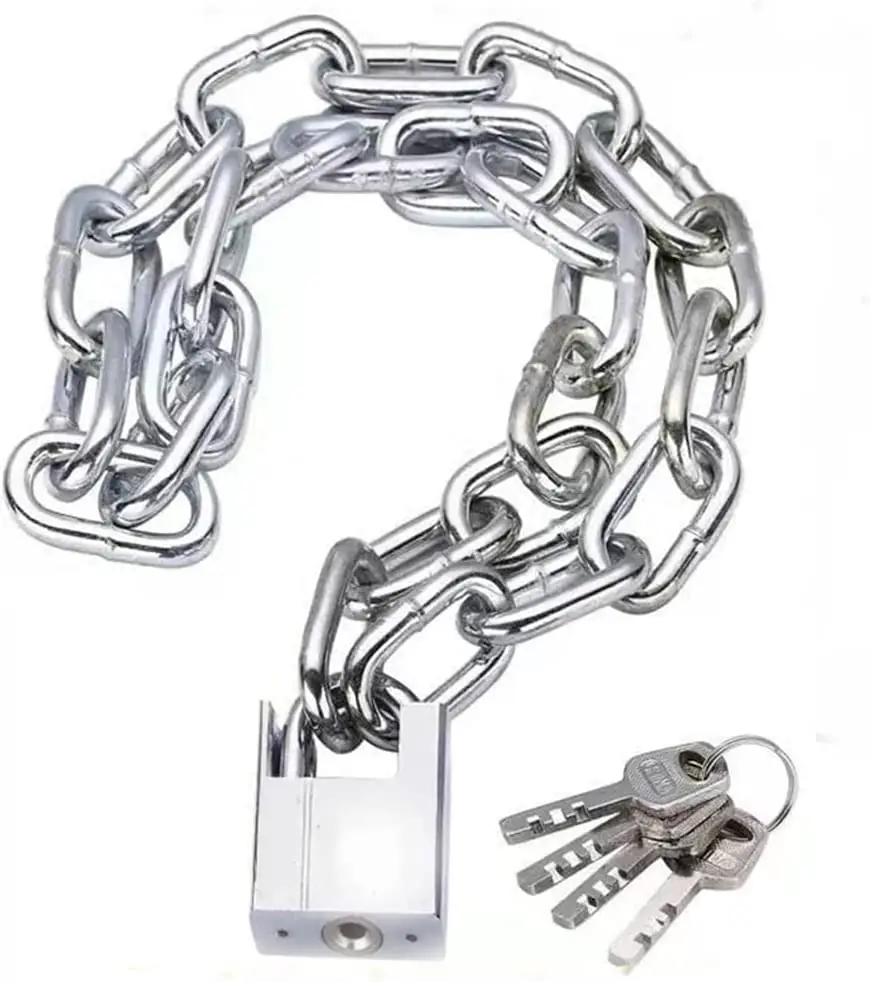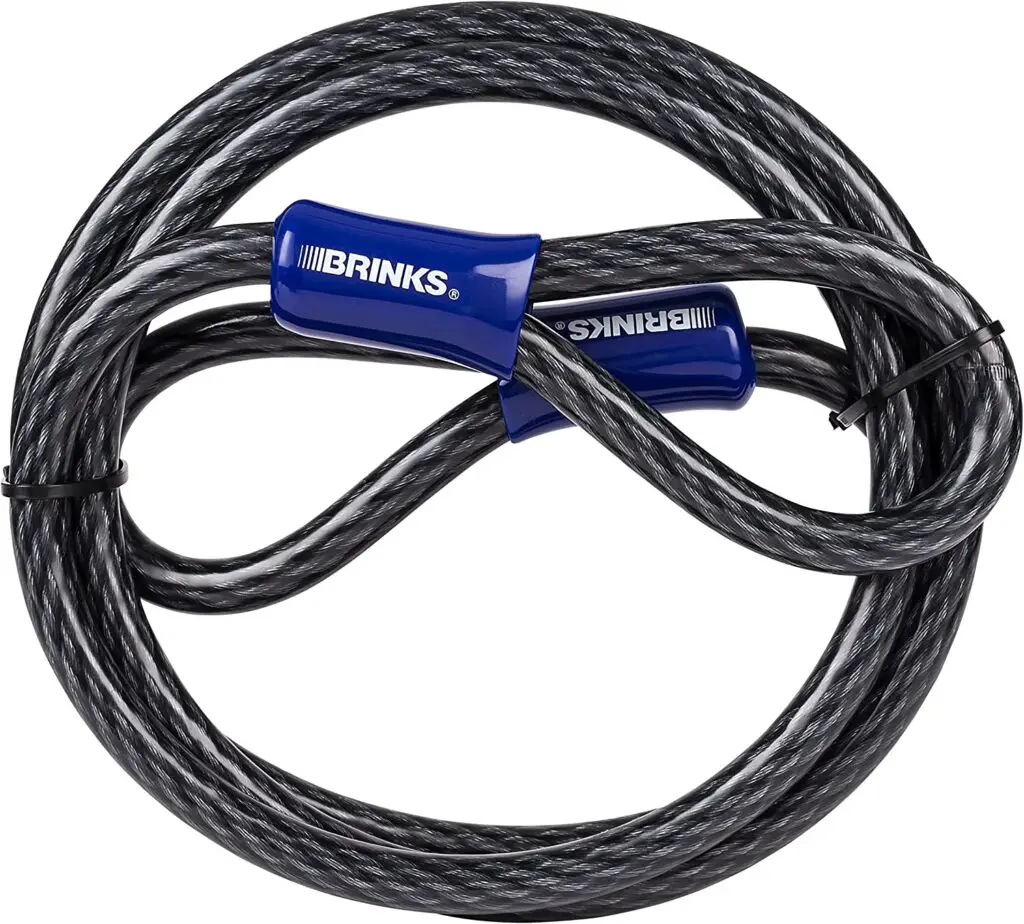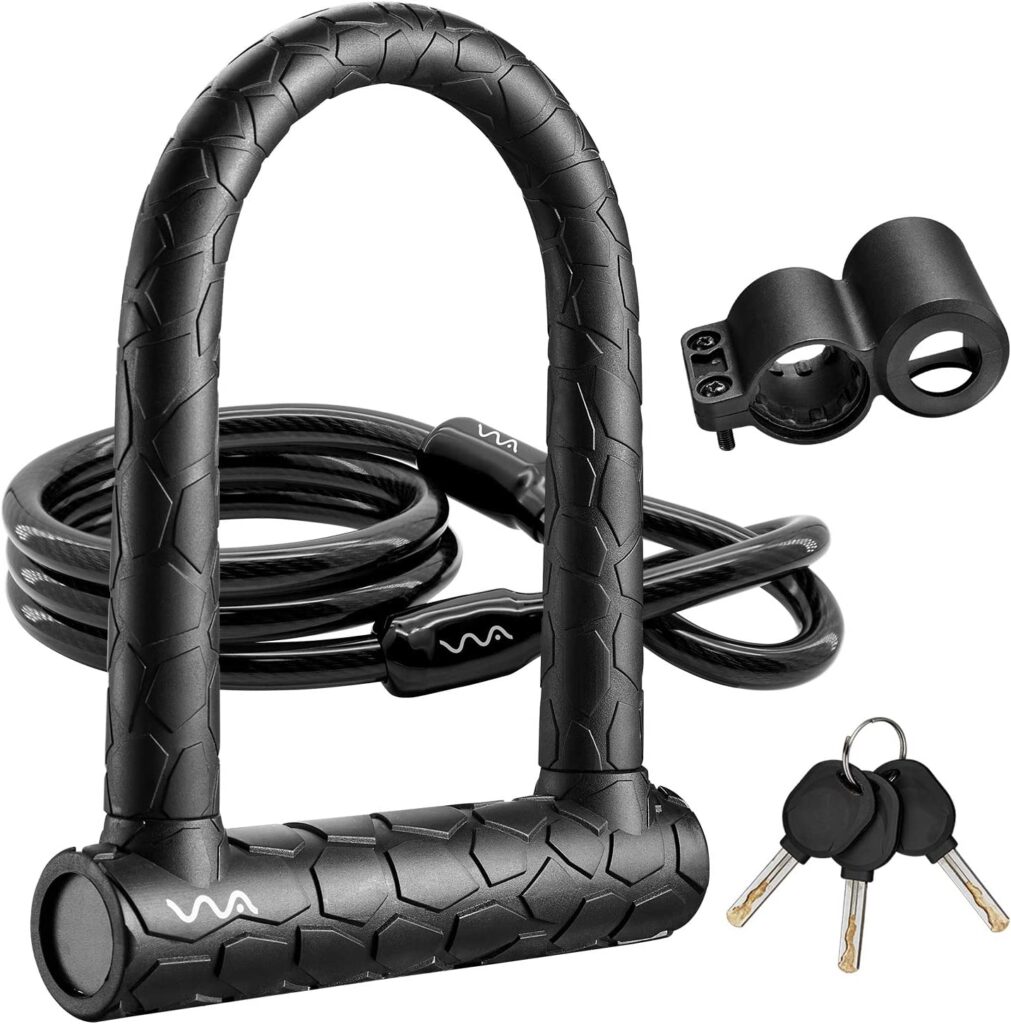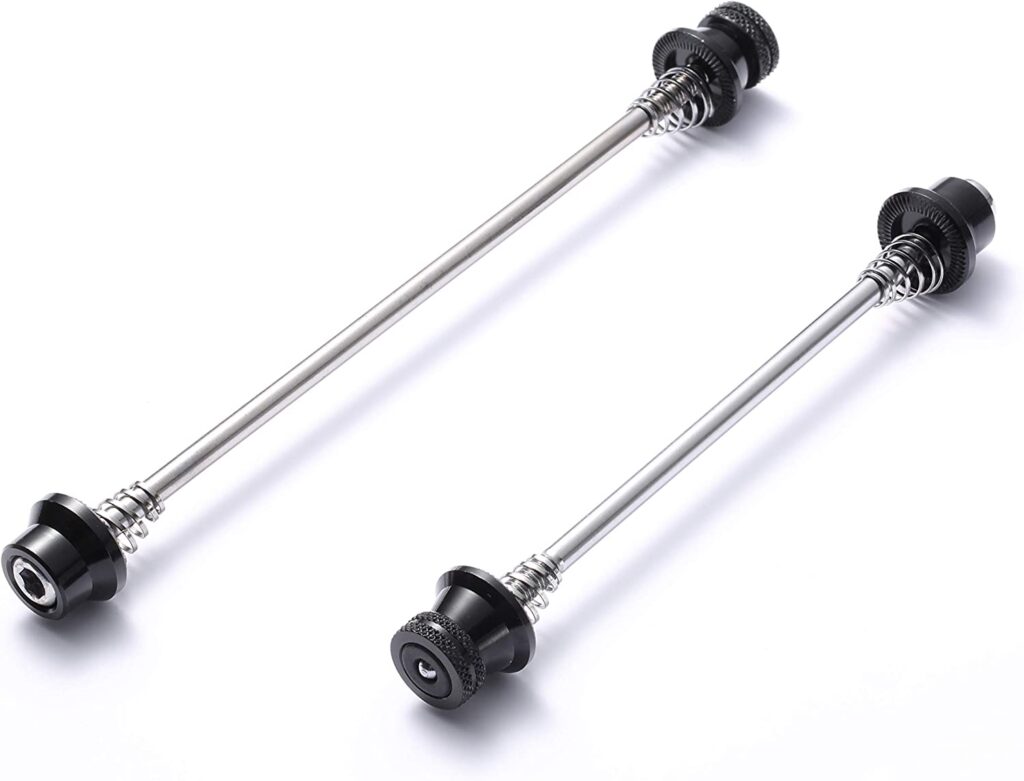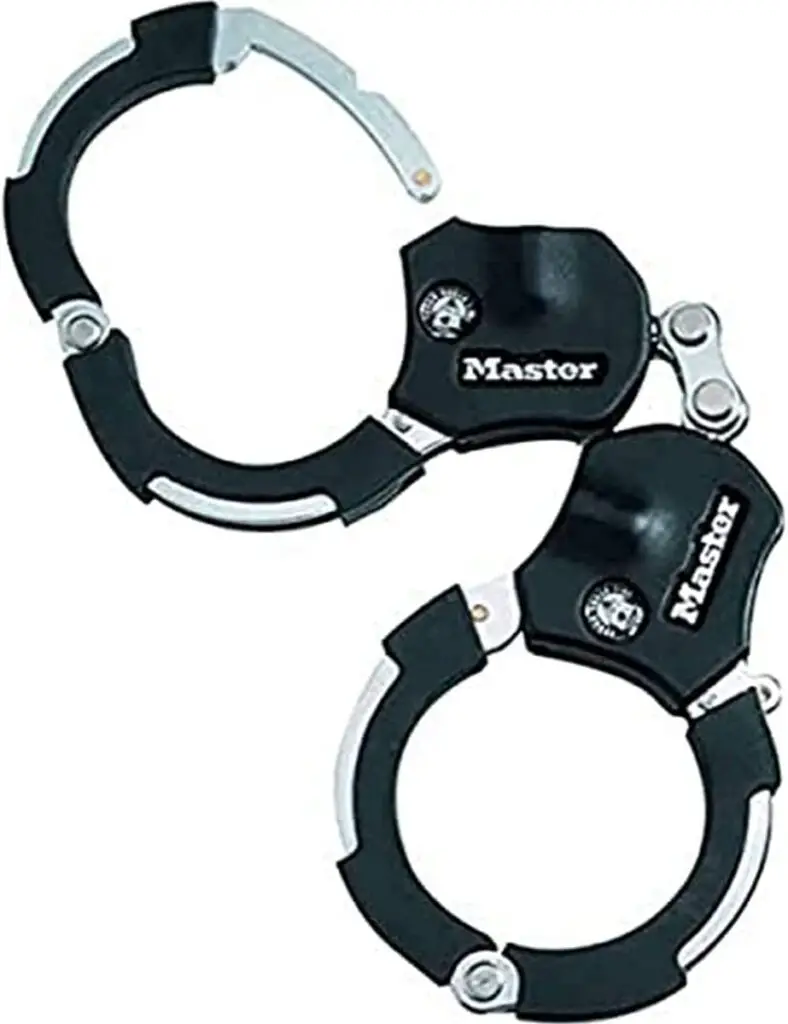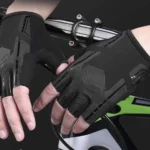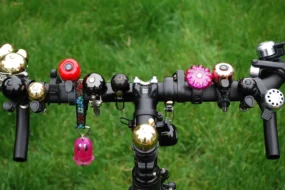
Bike locks are a crucial invention in the biking industry. They not only protect bikes from theft but also give riders peace of mind when away from their bicycles. Finding the best bike lock is a major concern for bikers. Consequently, various companies offer different types of bike locks to prevent theft.
Despite the reliability of bike locks, there may come a time when you need to keep them safe. When you are on the road and no longer need to use your bike lock, where should you keep it safe and secure?
Fortunately, there are several options available to store your bike lock. You can mount it on your bike, store it inside your pannier or backpack. For further information on where to store your bike lock while riding, please refer to our comprehensive guide.
What are the Types of Bike Locks?
When it comes to locking your bicycle, there are several types of bike locks available. Each type offers a specific level of protection for your bike while it is parked. Additionally, each bike lock has its own method of securing it. Therefore, it is essential to identify the type of bike lock you have and learn how to protect it correctly.
Chain with padlocks
The chain lock shares a similar appearance with the cable lock. However, the chain lock’s weight, link size, locking mechanism, and thickness vary. You can choose a chain with padlocks that is as thick as 8mm+, based on your needs and the size of your bicycle. This thickness offers maximum security when locking your bike.
The chain lock is challenging to cut and highly resistant to levering. Thieves will become frustrated with cutting the chain and discouraged from stealing your bike. Most chains also have a protective fabric or plastic covering to prevent rust or corrosion.
To ensure better protection, you can use a Sold Secure Silver or Gold Rated chain when safeguarding your bike. However, it’s worth noting that higher-security chains are much heavier than others, and storing them can be difficult.
Cable locks
Cable locks are a popular choice among bikers because they are affordable and easy to install. They have two ends that join together to lock your bike, and it is straightforward to attach the cable around your bike. One end of the cable can be inserted into the lock, and the key is turned to secure the attachment.
Additionally, there is a cable lock that uses combination keys or letters for the locking system. This type of lock is even easier to use than the traditional cable lock that requires a key to be turned.
Installing a cable lock is a breeze. You can secure it to a stationary post by wrapping the cable around your bike wheels and the post. This method will prevent a thief from stealing your bicycle.
D and U locks
D and U locks are another popular choice for bike security. However, when carrying a U lock on your bike, you need to be cautious because it is much heavier than other types of locks.
These locks are constructed from hardened steel shackles that come in various sizes and lengths. D and U locks are generally pricier than cable and chain locks, and they have a more intricate design. For these types of locks, you can attach the locking body to one end of the shackle for extra security.
The length and width of the shackle you use allow you to lock your bike in a way that minimizes the gaps between the lock and the post or furniture you’re using to secure it. This method decreases the chance that the thief can leverage or cut your locks. When selecting a D or U lock, it’s crucial to look for the Sold Secure rating, such as Bronze and Gold.
Secure skewers
Skewers are a lightweight alternative to the other types of bike locks discussed previously. They are commonly used to replace quick-release and bolt fixings for both wheels and seats. Skewers can securely lock your bike and are not simple to remove.
Removing skewers requires the right tools, such as Allen keys or spanners, and cannot be done by hand. This makes it challenging for thieves to steal your bike, as they would need to have the appropriate tools on hand. Using skewers allows you to securely lock your bike without the need to carry heavy chains or cable locks.
Cuff Shackles or Handcuff Locks
Cuff shackles, also known as handcuff locks, are an alternative option to consider for securing your bike. These locks feature one end that can be attached to a post or stationary furniture while parking your bike. The other end can be used to secure and attach the wheel or frame when locking the bike.
Cuff shackles often contain a ratchet lock that you can tighten around the locking point, reducing the chances of cutting or levering. However, it is important to note that most cuff shackles are short and limited in size. Therefore, you may need to use two or more shackles to safely lock your bike wheel or frame.
Carrying cuff shackles is easier compared to carrying chain locks or cables due to their compact size.
Places to Put Your Bike Locks When Riding
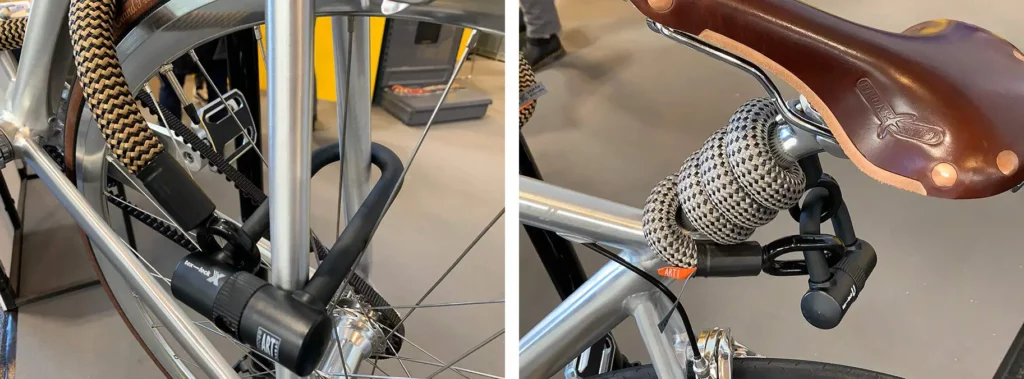
Coil them around the bike frame
If you’re biking without a bag or storage space, you can still keep your bike lock with you by coiling or attaching it to the bike frame. This way, you won’t have to carry a lock in your hands while navigating the road. Coiling the lock around the frame also saves space and won’t cause much disturbance when biking.
For optimum convenience, we suggest using a cable or chain lock and locking it to the top bar of your bike while on the road. Alternatively, you can store a u-lock on your bike by placing it around the seat or saddle. With these methods, you can easily and safely carry your bike lock with you while enjoying a smooth ride.
Backpack or Rucksack
Carrying heavy locks while biking can be a hassle, especially if you don’t have a storage space. Using a rucksack or backpack can provide enough storage space to accommodate the bulk and weight of the lock, making it a helpful solution.
The heaviest types of locks are cable and chain locks with padlocks. These locks are not only heavy but also bulky, adding significant weight when cycling. To make it easier, it is recommended to put them inside your backpack or rucksack while biking. This way, you won’t be disturbed by their weight when you attach them to your frame while on the road. The lock can be comfortably placed inside your bag, along with other essentials you carry. This method ensures a smooth ride without the added burden of heavy locks.
Place your locks in the handlebars
To keep your locks visible while cycling, you can place them on the handlebar. This way, you can keep an eye on them and store them properly. If your lock is made of steel or heavy metal, it will sit securely on your handlebar without swaying back and forth due to the weight of the material.
With this method, you can easily access your lock when needed and keep it within sight while riding. However, it is important to ensure that the lock is properly secured to the handlebar and does not obstruct your view while cycling. By using this approach, you can safely and conveniently transport your locks while on the road.
Mount the lock to the seat post
Bike lock mounting is another creative way to place your bike lock. U-locks and D-locks are easy to mount and provide a pleasing aesthetic to your bike. These types of locks are more sophisticated and will look great when mounted.
To keep your bike steady and balanced, you can mount the locks at the center of the frame. This way, the gravity and weight of the lock are well-distributed and won’t throw off your balance while riding. By utilizing this approach, you can securely and stylishly transport your locks while on the road.
Using belt strap holder
If you prefer to keep your lock on your body while cycling to your destination, a belt strap holder can be a useful storage solution. This holder allows you to wrap the belt around your waist and tuck in the lock securely, ensuring that it won’t fall off while cycling. With this method, you can confidently navigate the road without worrying about the lock.
Conclusion
As a responsible cyclist, safeguarding your bike at all times is crucial. You understand the importance of having the right bicycle lock to protect your bike. However, when you are on the road and cycling without needing to use your lock, storing this accessory securely is just as important.
Ensuring that your lock is stored in a safe place will give you peace of mind while riding and prevent any unnecessary disturbances. By utilizing the simple suggestions provided in this guide, you can gain great ideas about where to put your bike lock while cycling. These straightforward suggestions have been proven to be highly effective, and by following them, you can transport your lock safely and confidently.


